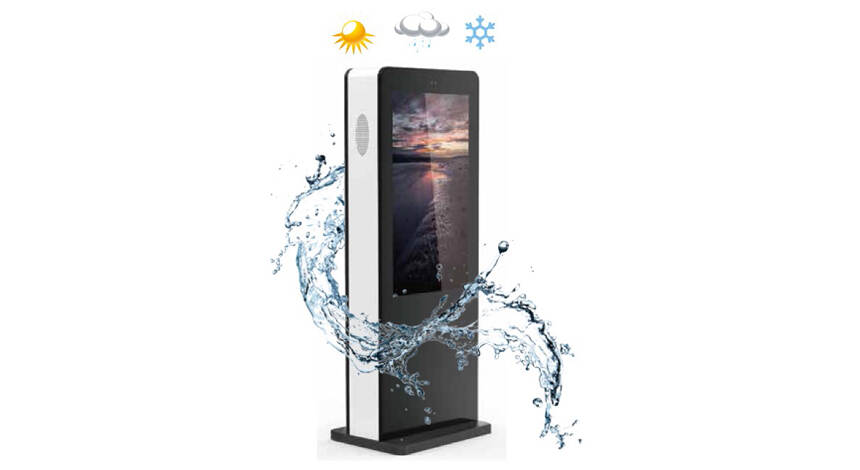Email format error
Email cannot be empty
Email already exists
6-20 characters(letters plus numbers only)
The password is inconsistent
Email format error
Email cannot be empty
Email does not exist
6-20 characters(letters plus numbers only)
The password is inconsistent

News
Here, you can describe a piece of text you want to express

Digital Signage Kiosks: The Cutting-Edge of Digital Advertising and Its Expanding Applications
In today’s fast-paced, technology-driven world, traditional advertising methods are gradually being replaced by more interactive and engaging solutions. One of the most transformative tools in the advertising industry is the digital signage kiosk—a high-tech, stand-alone device that displays dynamic content, including advertisements, information, and interactive features, in a visually appealing manner. These kiosks are rapidly gaining popularity across various industries for their ability to offer real-time communication, enhance brand visibility, and provide a unique customer experience.
In this blog, we’ll explore the role of digital signage kiosks in the modern advertising landscape, their applications, and how they are reshaping the way brands engage with consumers.
What Are Digital Signage Kiosks?
A digital signage kiosk is an interactive display unit that can show a variety of content, including digital advertisements, videos, images, and even social media feeds. These kiosks typically come with a touchscreen interface, allowing users to interact with the content displayed. They are often used in public spaces, retail environments, transportation hubs, and corporate settings, and can serve a range of purposes from advertising and wayfinding to informational displays and customer service.
The most common types of digital signage kiosks include:
-
Standalone Digital Kiosks: These are self-contained units designed to display digital content or advertisements. They usually have a high-definition screen and can be placed in high-footfall areas like shopping malls or airports.
-
Interactive Touchscreen Kiosks: These provide an added level of interactivity, allowing users to navigate through menus, choose products, or even make purchases directly from the kiosk.
-
Wayfinding Kiosks: Often found in malls, hospitals, or large venues, these kiosks help visitors navigate through complex spaces by providing maps and directional guidance.
The Evolution of Digital Advertising
Over the last decade, the world of advertising has seen a dramatic shift from static, traditional media like print and billboards to more dynamic, digital solutions. The advent of digital signage kiosks has significantly contributed to this evolution. Unlike traditional advertising, digital kiosks can display real-time, customizable content that can be easily updated and tailored to specific audiences or locations.
One of the key benefits of digital advertising is its ability to adapt quickly to changing market conditions. Advertisers can adjust their messages in real-time, based on factors like time of day, weather, location, or even customer demographics. For example, a retail store could use a digital signage kiosk to display personalized offers based on the time of day or a customer’s browsing history. This kind of flexibility and precision is impossible to achieve with traditional advertising methods.
Applications of Digital Signage Kiosks
Digital signage kiosks are being used in a wide variety of industries, offering businesses new ways to communicate with their audiences. Here are some of the key sectors benefiting from digital signage technology:
1. Retail
In the retail sector, digital signage kiosks have become indispensable tools for enhancing customer experience and driving sales. Retailers can use these kiosks to display promotions, product information, or even offer self-checkout options. Interactive kiosks can allow customers to browse through a catalog of products, check availability, and make purchases on the spot.
A prime example of this is the use of interactive digital signage in apparel stores, where customers can browse the store's inventory on a digital screen, access detailed product information, and even try on virtual outfits using augmented reality features.
2. Transportation and Airports
Airports and transportation hubs use digital signage kiosks for a variety of purposes. These include flight information displays, wayfinding systems, advertising, and even self-service check-in kiosks. Digital signage in airports has improved the customer experience by offering real-time updates, reducing confusion, and enhancing the overall flow of passengers through the facility.
For example, flight status screens can be updated in real time to inform passengers of any delays, gate changes, or cancellations. Similarly, interactive kiosks allow travelers to quickly check in, print boarding passes, and access other services without the need for human interaction.
3. Healthcare
In healthcare settings, digital signage kiosks can help improve patient engagement, streamline processes, and provide important information. Hospitals and clinics use these kiosks for wayfinding, appointment scheduling, and health-related information. For instance, patients can check in at a digital kiosk and confirm their details without waiting in long lines. Additionally, kiosks can display health tips, emergency alerts, and educational content, improving the overall patient experience.
4. Education
In educational institutions, digital signage kiosks are often used for displaying announcements, event schedules, and campus maps. These kiosks can help students navigate large campuses, find information about courses, or get updated on upcoming events. Interactive kiosks in libraries or student centers provide access to campus resources, including class schedules, event sign-ups, and more.
5. Corporate and Business Settings
Digital signage kiosks are increasingly being used in corporate offices and business environments to improve internal communications and employee engagement. These kiosks can display company announcements, news, and performance metrics, helping employees stay informed in real-time. Some businesses also use digital kiosks for customer service, where visitors can check in or inquire about services offered.
Advantages of Digital Signage Kiosks
The rise of digital signage kiosks has brought numerous advantages to businesses and organizations:
-
Dynamic Content Delivery: Unlike static signage, digital kiosks allow businesses to deliver real-time, multimedia content, such as videos, images, and interactive features. This makes the message more engaging and appealing to audiences.
-
Increased Engagement: With interactive touchscreens, users can engage directly with the content, providing a more personalized experience. For example, customers can access product details, order food, or find relevant information at the touch of a button.
-
Cost-Effective and Sustainable: While digital signage requires an initial investment, the long-term savings are substantial. Companies can easily update and replace content without needing to print new materials, which reduces paper waste and printing costs.
-
Improved Customer Experience: By providing relevant, up-to-date information at their fingertips, businesses can enhance the overall customer experience. Whether it’s providing directions, offering product recommendations, or facilitating self-service options, digital kiosks streamline customer interactions.
-
Data Collection: Some advanced digital signage kiosks are equipped with sensors and analytics tools that allow businesses to gather valuable customer data. This data can be used to analyze customer behavior, optimize content, and improve marketing strategies.
The Future of Digital Signage Kiosks
As digital signage technology continues to evolve, the future looks even more promising. We can expect to see AI-powered kiosks that offer hyper-personalized experiences based on customer preferences and behavior. Augmented reality (AR) features are also expected to play a bigger role in retail and entertainment, allowing consumers to visualize products in their environment before making a purchase.
Moreover, integrating IoT (Internet of Things) with digital signage will allow kiosks to interact with other devices, providing a more seamless and connected experience. For example, a smart digital signage kiosk could automatically adjust its content based on the weather or nearby foot traffic, providing tailored promotions to the right audience at the right time.
Conclusion
Digital signage kiosks are undeniably shaping the future of digital advertising. By offering dynamic content, real-time interactivity, and enhanced customer engagement, these kiosks provide businesses with powerful tools to create memorable and impactful experiences. From retail to healthcare, airports to education, digital signage kiosks are being leveraged across industries to drive communication, improve customer service, and revolutionize the way brands engage with their audiences. As technology continues to advance, the potential applications and capabilities of digital signage kiosks will only expand, making them an essential component of the digital advertising landscape.

